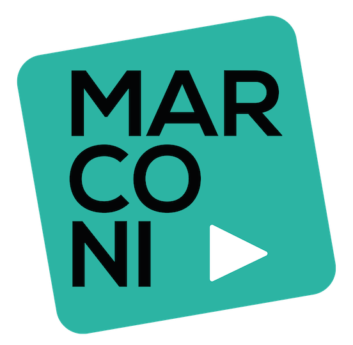AMSTERDAM — Visitors to the main radio area of the recent IBC exhibition may have noticed a striking hand-drawn white cardboard stand in the adjacent “Future Zone.”

This was the home of Project MARCONI [Multimedia and Augmented Radio Creation: Online, iNteractive, Individual] and HRadio, both funded by the European Union’s Horizon 2020 research and innovation program.
The project consortium includes public broadcasters NPO in the Netherlands, and Belgium-based VRT, alongside technology companies and academic partners. Together, they aim to improve radio experiences by enabling fully interactive and personalized radio solutions, integrating broadcast radio with digital and social media.

PERSONALIZED RADIO SOLUTIONS
In a live demonstration at IBC, MARCONI highlighted the technologies behind the project: different software tools integrated in a dashboard, using AI-powered chatbots and content analysis. The project showed engagement with listener content by replying to messages, dragging and dropping them into the radio program, and playing their footage on a screen on the other side of the stand.
Rik Bauwens, lead developer for VRT Innovation, describes how the project came about. “MARCONI was preceded by the ICoSOLE project, which focused on user-generated content during live events. For MARCONI, we narrowed this down to music events, such as festivals, in a radio context. Together with some of the ICoSOLE partners, additional technical companies, radio software provider Pluxbox, and radio teams from VRT and NPO, we drafted the MARCONI project.”
Bauwens explains that matching novel technological solutions such as face detection and chatbots to a contemporary radio workflow was the biggest challenge for the project.
 “To address this, we started by organizing co-creation workshops with both radio content producers and their listeners. Subsequently, we held observations with radio teams at VRT and NPO to get to know their current tools. We adopted an agile development process with week-long sprints and a stand-up with project partners every Monday, to continually evaluate and adjust our prototypes.”
“To address this, we started by organizing co-creation workshops with both radio content producers and their listeners. Subsequently, we held observations with radio teams at VRT and NPO to get to know their current tools. We adopted an agile development process with week-long sprints and a stand-up with project partners every Monday, to continually evaluate and adjust our prototypes.”
EXPERIMENTATION
The EU funding has also been helpful, he adds. “First, it allows us to experiment next to a live radio production; it gives us the freedom to start over very quickly if needed. Second, it allows us to organize open piloting with other radio stations in Europe, to get even more feedback.”
VRT is involved in both Project MARCONI and HRadio. “The use cases are different but complement each other very well,” explains Bauwens.
“MARCONI focuses on creating tools for radio-makers to handle novel ways of interaction with their audience. HRadio offers an end-user experience for radio listeners, such as rewinding live radio, participating in polls via DAB+ using a radio webview and so on.”
The aim for MARCONI is to offer a new toolset to radio stations by the end of the project in March 2020, with open pilots taking place until then. “Possibly, MARCONI gets a sequel in the years to come,” VRT’s Bauwens says. “Aside from interaction, visualization and extensive automation would be important topics for us.”







